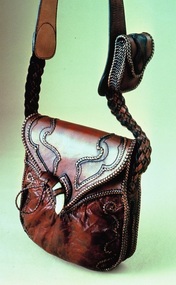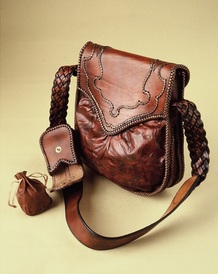I started being interested in leather when I was working as a Veterinary Public Health Officer late 60s, early 70s. From time to time I had occasion to visit tanneries to get an idea of the quality of skinning that took place in meatworks. I was fascinated by the tanning process and discovered a lot about it. My initial interest was only in bark-tanned leather, in which all chemicals that are used for the tanning are of natural extraction. The leather that most people see in fashion goods is not bark-tanned, but what is known as chrome-tanned with a plastic colouring surface. I'm amused when people say, "Oh. I just love the smell of leather!" What they really mean, is they love the smell of plastics and chemicals.
Anyway, I wasn't interested in the sort of early leatherwork of the Texan style of horses heads and roses carved into the surface. I went the way of the early European braiders and Australian leather whip-makers and saddle-makers. Braiding, in those early days (mid 70s) was my bag (pun intended).
Anyway, I wasn't interested in the sort of early leatherwork of the Texan style of horses heads and roses carved into the surface. I went the way of the early European braiders and Australian leather whip-makers and saddle-makers. Braiding, in those early days (mid 70s) was my bag (pun intended).
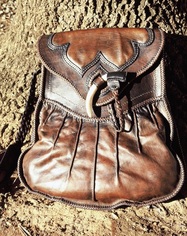
This is a shoulder bag made of bark-tanned cowhide, with the lower pouch part of goat leather, also vegetable-tanned. All lacing is hand-cut bark-tanned kangaroo braid and all stitching is handsewn with linen thread.
The closer is a boar's tusk.
This bag is deceptive. It's pretty big.
Approx 34cm high
About Circa 1975
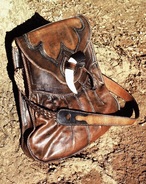
Another view of the same bag (above).
This was made in the period before my formal training in production design work.
This was made in the period before my formal training in production design work.
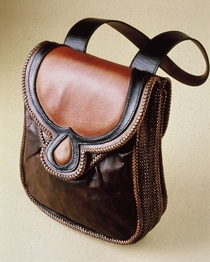
Another similar piece, this time cow and calf-hide with a fully braided gusset ( a sort of 'knitting' you might call it). All-in-all a real masochist's delight.
